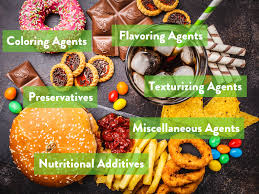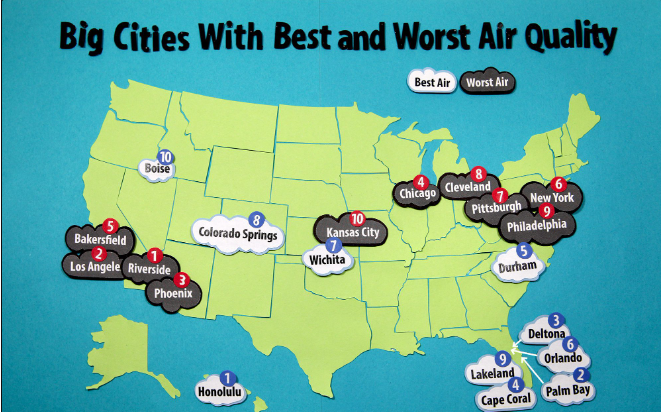Confusion in the Food System: Is Gluten the Bad Guy?
The world of food and agriculture in America has been growing and changing for hundreds of years and so has the way that we as humans interact and react to food. Recently, the amount of Americans who claim to be allergic to certain food groups has significantly increased. These increases in beliefs and symptoms raise many unanswered questions about the way that American food is processed and why so many people seem to have a negative relationship with food. Specifically referring to gluten and lactose sensitivities; people are altering their diets because their bodies are reacting negatively to products like bread, dairy, and meats. In reality, there is so much more going on with food, allergies may have nothing to do with the type of meal that is consumed but rather the hidden ingredients. The reason that Jane Doe gets bloated when she eats bread may not be an intolerance to gluten, but rather a negative reaction to the preservatives, sugar, and unnecessary “extras” that are baked into that store-bought loaf. Highlighting gluten intolerance and sensitivity especially, some questions arise when considering why it has become so common to notice these symptoms and how to fix them.
What is Gluten and Gluten Intolerance?
Gluten, a protein that can be found in wheat, rye, and grain, is found in a wide variety of foods found in America. From processed foods like crackers, cookies, pasta, and alcoholic beverages, to homemade breads and cakes, gluten is everywhere (Cleveland Clinic). While gluten intolerance only affects 6% of the U.S. population, it’s worth diving deeper into what this intolerance is and why it has become more common. Gluten intolerance is a condition where the person gets sick from consumption of gluten. Most commonly, those who have gluten intolerance suffer from chronic stomach pain, bloating, diarrhea, fatigue, and even migraines due to the consumption of gluten. Often confused with the auto-immune disorder, Celiac Disease, it is important to note that gluten intolerance is just a sensitivity or negative reaction to gluten. So, why does it seem that so many people have this food sensitivity?
Increasingly Common or Self-Diagnoses?
With the availability of search engines like Google at patient fingertips, it is not uncommon for self-diagnoses to occur. Self-diagnoses often result from quick research through the internet, magazines, or conversations with friends/family and can be detrimental to a patient’s health or treatment. Rather than consulting medical professionals and gaining factual insight on personal health, people are addressing health problems that may not even apply to them. Especially common in younger generations (Johns Hopkins), the self-diagnosing of gluten intolerance inhibits the root of American diets and our food system to be addressed. Not only this, but improper treatment or unnecessary avoidance of certain foods, could worsen diets and minimize health benefits from receiving nutrients in certain foods.
Gluten Intolerance vs. Processed Foods
One of the main reasons behind the rise in presumed gluten intolerance across America involves the overconsumption of heavily processed foods. While these foods do not “cause” gluten intolerance, these processed foods may inherently cause the same symptoms one with a gluten intolerance may experience. Certain processed foods that mainly contain gluten are commonly found in grocery stores — however, gluten may not be the problem for those adverse reactions. From additives and preservatives to artificial sweeteners and refined sugars, the unnecessary ingredients in food like bread and pastries tend to be overlooked when addressing negative symptoms after eating said food types (Wellness). These ingredients, though sometimes harmless, have the potential to cause or mimic similar health issues that a gluten intolerance would cause.
Sandwich bread found in grocery stores like Walmart and Aldi for example, often contains calcium propionate which is a preservative that is known to cause headaches and migraines. Additionally, potassium iodate found in Walmart Great Value Sandwich Bread has been known to cause upset stomach and diarrhea. These are just a few ingredients in foods that are eaten every day, which long term can affect gut health, bloating, and associated diseases. Other common food additives like BHA, titanium dioxide, and rBST are banned in other countries but are still permitted to be used in the United States. Additionally, common chemical food dyes like Red 40 have been known to cause bowel diseases and allergic reactions (AmenClinics). Despite side effects and possible health risks, the FDA continues to approve these chemicals to be utilized in our foods and they can cause irreversible damage to American health and wellness (FDA). At this rate, it is hard to determine what your body may or may not react to, but knowing that gluten intolerance and consuming processed foods could have similar consequences sends out a warning for Americans looking to better their health.
Checking Labels and Knowing Your Body
Because the American food system vastly differs from other countries, it is of utmost importance that Americans understand the risks of consuming processed foods and how their bodies can negatively react. Gluten intolerance is not nearly as common as people would think, so it is imperative to avoid self-diagnosing and instead assess diet choices. By looking at food labels and knowing which ingredients can be harmful before buying, Americans can understand what foods they react best to and incorporate healthy practices into their weekly grocery stops. There is no telling when this food system will address the unhealthy foods that are being sold to citizens regularly, so analyzing personal food choices and what is put into processed foods is essential to making the safest choices for Americans.










